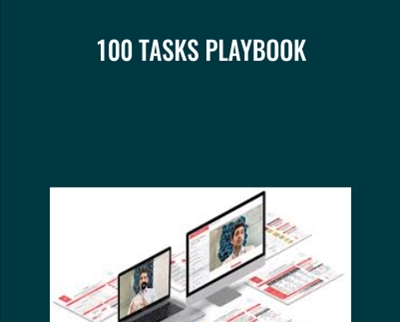Buy High Performance Time Series – Matt Dancho- Business Science Course at GBesy. We actively participate in Groupbuys and are committed to sharing knowledge with a wider audience. Rest assured, the quality of our courses matches that of the original sale page. If you prefer, you can also buy directly from the sale page at the full price (the SALEPAGE link is directly provided in the post).
![]() Become the time-series domain expert for your organization
Become the time-series domain expert for your organization
High Performance Time Series by Matt Dancho- Business Science,
Salepage link: At HERE. Archive: https://archive.is/wip/IBDQO
Become the Time Series Expert
for your organization
The High-Performance Time Series Forecasting Course is an amazing course designed to teach Business Analysts and Data Scientists how to reduce forecast error using state-of-the-art forecasting techniques that have won competitions. You’ll undergo a complete transformation learning the most in-demand skills that organizations need right now. Time to accelerate your career.
Undergo a Complete Transformation
By learning forecasting techniques that get results
With High-Performance Forecasting, you will undergo a complete transformation by learning the most in-demand skills for creating high-accuracy forecasts.
Through this course, you will learn and apply:
Machine Learning & Deep Learning
Feature Engineering
Visualization & Data Wrangling
Transformations
Hyper Parameter Tuning
Forecasting at Scale (Time Series Groups)
How it works
Your path to becoming an Expert Forecaster is simplified into 3 streamlined steps.
1 Time Series Feature Engineering
2 Machine Learning for Time Series
3 Deep Learning for Time Series
Part 1
Time Series Feature Engineering
First, we build your time series feature engineering skills. You learn:
Visualization: Identifying features visually using the most effective plotting techniques
Data Wrangling: Aggregating, padding, cleaning, and extending time series data
Transformations: Rolling, Lagging, Differencing, Creating Fourier Series, and more
Feature Engineering: Over 3-hours of content on introductory and advanced feature engineering
Part 2
Machine Learning for Time Series
Next, we build your time series machine learning skills. You learn:
17 Algorithms: 8 hours of content on 17 TOP Algorithms. Divided into 5 groups:
ARIMA
Prophet
Exponential Smoothing – ETS, TBATS, Seasonal Decomposition
Machine Learning – Elastic Net, MARS, SVM, KNN, Random Forest, XGBOOST, Cubist, NNET & NNETAR
Boosted Algorithms – Prophet Boost & ARIMA Boost
Hyper Parameter Tuning: Strategies to reduce overfitting & increase model performance
Time Series Groups: Scale your analysis from one time series to hundreds
Parallel Processing: Needed to speed up hyper parameter tuning and forecasting at scale
Ensembling: Combining many algorithms into a single super learner
Part 3
Deep Learning for Time Series
Next, we build your time series deep learning skills. You learn:
GluonTS: A state-of-the-art forecasting package that’s built on top of mxnet (made by Amazon)
Algorithms: Learn DeepAR, DeepVAR, NBEATS, and more!
Challenges & Cheat Sheets
Next, we build your time series machine learning skills. You learn:
Cheat Sheets: Developed to make your forecasting workflow reproducible on any problem
Challenges: Designed to test your abilities & solidify your knowledge
Summary of what you get
A methodical training plan that goes from concept to production ($10,000 value)
Part 1 – Feature Engineering with Timetk
Part 2 – Machine Learning with Modeltime
Part 3 – Deep Learning with GluonTS
Challenges & Cheat Sheets
Course Curriculum
Welcome to High Performance Time Series!
High-Performance Time Series – Become the Time Series Expert for Your Organization (2:34)
Private Slack Channel – How to Join
Video Subtitles (Captions)
What is a High-Performance Forecasting System?
[IMPORTANT] System Requirements – R + Python Requirements & Common Issues
Would You Like To Become An Affiliate (And Earn 20% On Your Sales)?
Prerequisites
Prerequisite – Data Science for Business Part 1
Getting Help
Getting Help (IMPORTANT!!!)
Module 0 – Introduction to High-Performance Forecasting
High-Performance Forecasting – What You’re Learning, Why You’re Learning It (0:43)
0.1 Forecast Competition Review
The Forecasting Competition Review & Course Progression (3:34)
2014 Kaggle Walmart Recruiting Challenge (5:11)
2018 M4 Competition (3:37)
2018 Kaggle Wikipedia Website Traffic Forecasting Competition (4:30)
2020 M5 Competition (5:59)
5 Key Takeaways from the Forecast Competition Review (5:41)
0.2 Course Projects – Google Analytics, Email Subscribers, & Sales Forecasting
The Business Case – Developing a Best-in-Class Forecasting System (3:03)
0.3 What Tools are in Your Toolbox?
Timetk: Time Series Data Preparation, Visualization, & Preprocessing (5:54)
Modeltime: Time Series Machine Learning (5:25)
GluonTS: Time Series Deep Learning (2:01)
[Cheat Sheet] Forecasting Workflow
Module 01 – Time Series Jumpstart
Time Series Jumpstart (0:54)
1.1 Time Series Project Setup
Project Setup (2:28)
Course Data (File Download) (1:02)
R Package Installation – Part 1 (File Download) (5:26)
R Package Installation – Part 2 (5:14)
Jumpstart Setup (File Download) (0:44)
1.2 Business Understanding & Dataset Terminology
Establish Relationships, Part 1 – Google Analytics Summary Dataset (4:11)
Establish Relationships, Part 2 – Google Analytics Top 20 Pages (5:23)
Build Relationships – Mailchimp & Learning Lab Events (4:49)
Generate Course Revenue – Transaction Revenue & Product Events (3:03)
Code Checkpoint (File Download) (0:54)
1.3 TS Jumpstart: Dive into Forecasting Email Subscribers!
Read This! – Time Series Jumpstart Intent
Time Series Jumpstart – Setup (File Download) (3:20)
Libraries & Data (3:13)
1.3.1 Exploratory Data Analysis for Time Series
EDA for Time Series (1:08)
Summarize By Time (5:46)
Time Series Summary Diagnostics (4:47)
Pad by Time (4:08)
Visualize the Time Series (3:12)
1.3.2 Evaluation & Train/Test Windows
Evaluation Window – Filter By Time (4:43)
Time Series Train/Test Split (4:53)
1.3.3 Forecasting with Prophet
Training a Prophet Model with Modeltime (4:21)
Modeltime Forecasting Workflow – Round 1 (7:43)
1.3.4 Forecasting with Feature Engineering
Visualizing Seasonality (4:34)
Feature Engineering – Part 1 (5:45)
Feature Engineering – Part 2 (5:51)
Machine Learning with Workflows (3:35)
Modeltime Forecasting Workflow – Round 2 (5:59)
1.3.5 Recap & Code Checkpoint – Module 01 – TS Jumpstart
Here’s where you are going. (3:11)
Code Checkpoint (File Download)
✨[Part 1] Time Series with Timetk
Welcome to Part 1 – Time Series with Timetk! (2:17)
Module 02 – Time Series Visualization
Setup (File Download) & Overview – Visualization (2:11)
Data Preparation – Part 1 (4:29)
Data Preparation – Part 2 (3:23)
2.1 Time Series Plots [MUST KNOW FUNCTION]
[MUST KNOW] Plotting Time Series (5:31)
Plotting with Transformations (4:37)
Adjusting the Smoother (6:11)
Smoother for Groups (1:54)
Interactive & Static Plots (2:00)
2.2 Autocorrelation Plots
ACF & PACF Concepts – Autocorrelation & Partial Autocorrelation
ACF & PACF Plotting (7:49)
Lag Adjustment (1:24)
CCF Plotting – Cross Correlations (7:58)
2.3 Seasonality Plots
Seasonality Box Plot (5:52)
Seasonality Violin Plot (0:53)
2.4 Anomaly Plots
Anomaly Plot Basics (4:50)
Getting the Anomaly Data (2:00)
Working with Grouped Data (1:43)
2.5 STL Decomposition & Regression Plots
STL Decomposition Plot (4:44)
STL Decomposition – Grouped Time Series (2:11)
2.6 Regression Plots [SECRET WEAPON FOR FEATURE ENGINEERING]
[SECRET WEAPON] Time Series Regression Plot (7:08)
Time Series Regression Plot – Grouped Time Series (4:05)
2.7 Code Checkpoint – Module 02 – Visualization
Code Checkpoint (File Download)
Module 03 – Time Series Data Wrangling
Setup (File Download) & Overview – Data Wrangling (2:34)
3.1 Summarise By Time [MUST KNOW]
Single & Grouped Time Series Summarizations (4:37)
Using Across (to Summarize Wide-Format Tibbles by Time) (5:11)
Weekly/Monthly/Quarterly/Yearly Aggregations (3:33)
Floor, Ceiling, Round (5:15)
3.2 Pad by Time
Filling in Gaps (2:54)
From Low-Frequency to High-Frequency (3:36)
3.3 Filter By Time
Zooming & Slicing (5:14)
Offsetting by Time (2:01)
3.4 Mutate By Time
Extrapolate the Mean, Median, Max, Min By Time (7:57)
3.5 Joining By Time
Combining Subscribers & Web Traffic (3:48)
Inspecting the Join (3:00)
Formatting the Join for Feature Relationships (5:49)
Join Cross Correlations (3:22)
3.6 Time Series Index Operations
Making a Time Series (4:39)
Making a Holiday Sequence (3:14)
Time Offsets (3:01)
Making a Future Time Series (3:12)
3.7 Forecasting with Future Frames
The Future Frame (2:47)
[FORECAST SPOTLIGHT] Forecasting with the Future Frame (6:53)
3.8 Code Checkpoint – Module 03 – Data Wrangling
Code Checkpoint (File Download)
Module 04 – Transformations for Time Series
Setup (File Download) & Overview – Transformations (2:15)
Libraries & Data (2:12)
4.1 Variance Reduction Transformations – Log & Box Cox [MUST KNOW]
Why is Variance Reduction Important? (4:43)
Log – Log (and Log1P) Transformation (4:17)
Log – Assessing the Benefit of Log1P Transformation (2:51)
Log – Groups & Inversion (3:43)
Box Cox – What is the Box Cox Transformation? (2:34)
Box Cox – Assessing the Benefit (4:04)
Box Cox – Inversion (2:05)
Box Cox – Managing Grouped Transformations & Inversion (8:36)
4.2 Rolling & Smoothing Transformations
Introduction to Rolling & Smoothing (1:49)
Rolling Windows – What is a Moving Average? (File Download) (3:53)
Rolling Windows – Moving Average & Median Applied (8:53)
Loess Smoother (7:02)
Rolling Correlation – Slidify, Part 1 (4:16)
Rolling Correlation – Slidify, Part 2 (7:40)
[BUSINESS SPOTLIGHT] The Problem with Forecasting using a Moving Average (6:43)
4.3 Range Reduction Transformations
Introduction to Normalization & Standardization (0:59)
What is Normalization? [Min = 0, Max = 1] (4:50)
What is Standardization? [Mean = 0, Standard Deviation = 1] (2:31)
4.4 Imputation & Outlier Cleaning
Introduction to Imputation & Outlier Cleaning (0:44)
Imputation – Time Series NA Repair (6:40)
Anomalies – Time Series Outlier Cleaning (7:22)
Anomalies – When to Remove Outliers (5:21)
4.5 Lags & Differencing Transformations [MUST KNOW]
Introduction to Lags & Differencing (1:08)
Lags – What is a Lag? (1:49)
Lags – Lag Detection with ACF/PACF (3:54)
Lags – Regression with Lags (5:06)
Differencing – Growth vs Change (4:00)
Differencing – Acceleration (6:22)
Differencing – Comparing Multiple Time Series (4:44)
Differencing – Inversion (0:57)
4.6 Fourier Series [MUST KNOW]
Introduction to the Fourier Series (7:23)
Fourier Regression (4:24)
4.7 Constrained Interval Forecasting [FORECAST SPOTLIGHT]
What is the Log Interval Transformation? (5:47)
Visualizing the Transformation (4:12)
Transformations & Preprocessing (5:09)
Modeling (6:29)
Preparing Future Data (3:36)
Making Predictions (1:05)
Combining the Forecast Data (4:08)
Estimating Confidence Intervals (8:24)
Visualizing Confidence Intervals (2:10)
Inverting the Log Interval Transformation (4:08)
4.8 Code Checkpoint – Module 04 – Transformations
Code Checkpoint (File Download)
⛰️ Challenge #1 – Exploring Transactions & Web Page Traffic
Challenge #1 Discussion (File Download) (4:21)
Solution – Part 1 (File Download) (7:18)
Solution – Part 2: Begins at “Identify Relationships” (7:51)
Module 05 – Introduction to Feature Engineering (for Time Series)
Setup (File Download) & Overview – Intro to Feature Engineering (2:30)
Data Prep, Part 1 – Log Standardize (5:27)
Data Prep, Part 2 – Getting Ready to Clean (5:01)
Data Prep, Part 3 – Targeted Cleaning with Between Time (4:18)
5.1 Time-Based Features (Trend & Seasonal/Calendar) [MUST KNOW]
The Time Series Signature (7:55)
Feature Removal (3:28)
Linear Trend (2:10)
Non-Linear Trend – Basis Splines (4:41)
Non-Linear Trend – Natural Splines (Stiffer than Basis Splines) (4:29)
Seasonal Features – Weekday & Month (3:21)
Seasonal Features – Combining with Trend (5:23)
5.2 Interactions
Interaction Features – Spikes Every Other Wednesday (7:35)
5.3 Fourier Features
Selecting & Adding Fourier Frequency Features (4:21)
Modeling & Visualizing the Fourier Effects (2:07)
5.4 Autocorrelated Lag Features
Selecting & Adding Lag Features (6:59)
Modeling & Visualizing the Lag Effects (5:20)
5.5 Special Event Features
Preparing Event Data for Analysis (6:34)
Visualizing Events (2:57)
Modeling & Visualizing Event Effects (2:08)
Fixing the Spline (2:07)
5.6 External Regressors (Xregs)
Transforming Xregs (5:05)
Joining Xregs (1:49)
Examining Cross Correlations (1:53)
Modeling with Xregs (3:28)
Visualizing PageViews vs Optins & Modeling Lags (6:58)
5.7 Recommended Model Features
Collecting the Recommended Model (3:44)
Saving the Model Artifact (2:28)
5.8 Code Checkpoint – Module 05 – Introduction to Feature Engineering
Code Checkpoint (File Download)
Module 06 – Advanced Feature Engineering Workflow
Forecasting Workflow [CHEAT SHEET] ️ (3:40)
Setup (File Download) & Overview – Advanced Feature Engineering (1:43)
Data Preparation (4:42)
6.1 Creating the “Full” Dataset – Extending & Adding Lagged Features & Events [IMPORTANT]
The “Full” Dataset (2:50)
Extending – Future Frame (3:21)
Adding Lag Features (4:02)
Add Lagged Rolling Features (5:03)
Add Events (External Regressors) (2:57)
Format Column Names (3:09)
6.2 Separate into Modeling Data & Forecast Data
Data Prepared / Future Data Split (2:48)
6.3 Separate into Training Data & Testing Data
Train / Test Split (3:55)
6.4 Recipes – Feature Engineering Pipeline Steps
Recipes Intro (2:41)
Step – Time Series Signature Features (5:48)
Step – Feature Removal (3:10)
Step – Standardization (2:11)
Step – One-Hot Encoding (1:55)
Step – Interaction Features (2:28)
Step – Fourier Series Features (2:03)
6.5 Building the Spline Model
Model Spec: LM Model (1:02)
Recipe Spec: Spline Features (5:59)
Workflow: Spline Recipe + LM Model (2:49)
6.6 Introduction to Modeltime Workflow
Modeltime Table & Calibration (2:08)
Forecasting the Test Data (2:40)
Measuring the Test Accuracy (1:19)
Comparing the Training & Testing Accuracy (1:32)
6.7 Building the Lag Model
Recipe Spec: Lag Features (3:00)
Workflow: Lag Recipe+ LM Model (2:40)
Modeltime: Comparing Spline & Lag Models (4:23)
6.8 Forecasting the Future
Refitting the Models (4:37)
Transformation Inversion (5:23)
Visualizing the Forecast in the Original Scale (1:59)
Overfitting (An Optional Fix)
6.9 Saving the Artifacts
Creating an Artifact List, Part 1 (4:34)
Creating an Artifact List, Part 2 (3:11)
Organizing the Artifacts List (1:57)
Saving the Artifacts (1:28)
6.10 Code Checkpoint – Module 06 – Advanced Feature Engineering
Code Checkpoint (File Download)
⛰️ Challenge #2 – Feature Engineering & Modeltime Workflow [YOU’VE GOT THIS!]
Challenge Discussion, Part 1 (File Download) – Feature Preparation (5:11)
Challenge Discussion, Part 2 – Feature Engineering & Modeling (4:56)
Challenge #2 – Solution
Solution, Part 1 (File Download) – Collect & Prepare Data (3:49)
Solution, Part 2 – Visualizations (3:19)
Solution, Part 3A – Create Full Dataset (5:46)
Solution, Part 3B – Visualize the Full Dataset (3:47)
Solution, Part 4 – Model/Forecast Data Split (1:05)
Solution, Part 5 – Train/Test Data Split (0:56)
Solution, Part 6 – Feature Engineering (4:18)
Solution, Part 7 – Modeling: Spline Model (6:08)
Solution, Part 8 – Modeling: Lag Model (2:25)
Solution, Part 9 – Modeltime (4:03)
Solution, Part 10 – Forecast (6:49)
Challenge #2 Bonus – Regularization
Regularization, Part 1 (File Download) – Model: GLMnet (4:01)
Regularization, Part 2 – Improving the Lag Model with GLMNet (5:28)
Regularization, Part 3 – Forecasting the Future Data with GLMNet + Lag Recipe (3:02)
Part 1 Complete – You rock!
WOOO HOOO – You crushed it!
✨[Part 2] Machine Learning for Time Series with Modeltim
Picking Up From Part 1 (Project Download)
Module 07 – Modeltime Workflow [DEEP DIVE]
Setup – Modeltime Workflow [In-Depth] (1:25)
Overview – Modeltime Workflow [In-Depth] (1:16)
Libraries & Artifacts Preparation (2:33)
7.1 Making Models – Object Types & Requirements
Model Requirements for Modeltime (1:34)
Parsnip Object Models – Univariate (3:37)
Workflow Objects – Multivariate, Date-Based Features (7:14)
Workflow Object – Multivariate, External Features (4:53)
7.2 Modeltime Table
Modeltime Table – Key Requirements (4:27)
7.3 Calibration Table
Calibration Table – How It Works (3:29)
7.4 Measuring Model Accuracy [IMPORTANT!!!]
Primary Accuracy Metrics & Uses [SUPER IMPORTANT] (7:40)
Custom Metric Sets using Yardstick (3:54)
Customizing the Accuracy Table Output (3:28)
7.5 Forecasting the Test Data
Modeltime Forecast – How It Works (6:22)
Customizing the Forecast Visualization (5:00)
7.6 Model Refitting & Forecasting
Refitting – How It Works (3:02)
Making the Forecast (5:20)
7.7 Code Checkpoint – Module 07A – Modeltime Workflow [In-Depth]
Code Checkpoint (File Download)
7.8 New Features of Modeltime 0.1.0 – Module 07B
Setup (File Download) – Modeltime New Features (1:53)
Expedited Forecasting – Modeltime Table (5:20)
Expedited Forecasting – Skip Straight to Forecasting (2:20)
Visualizing a Fitted Model (2:57)
Calibration – In-Sample vs Out-of-Sample Accuracy (5:25)
Residual Diagnostics – Getting Residuals (2:16)
Residuals – Time Plot (2:39)
Residuals – Plot Customization (2:29)
Residuals – ACF Plot (4:06)
Residuals – Seasonality Plot (3:50)
7.9 Code Checkpoint – Module 07B – Modeltime New Features!
Code Checkpoint (File Download)
Module 08 – ARIMA
Setup (File Download) (0:40)
ARIMA Training Overview (1:29)
Libraries & Artifacts Setup (1:49)
8.1 ARIMA Concepts
Auto-Regressive Functions: ar() & arima() (5:15)
Auto-Regressive (AR) Modeling with Linear Regression (3:11)
Single-Step Forecast for AR Models (4:43)
Multi-Step Recursive Forecasting for AR Models (4:44)
Integration (Differencing) (5:42)
Moving Average (MA) Process (Error Modeling) (7:36)
Seasonal ARIMA (SARIMA) (4:29)
Adding XREGS (SARIMAX) (4:44)
8.2 ARIMA in Modeltime
Setting Up Basic ARIMA in Modeltime (4:45)
Trying Different ARIMA Parameters (5:11)
About AIC (Akaike Information Criterion) (3:42)
8.3 Modeltime Auto ARIMA
Implementing Auto ARIMA in Modeltime (1:49)
How Auto ARIMA Works – Lazy Grid Search (1:27)
Comparing ARIMA & Auto ARIMA (3:15)
Adding Fourier Features to Pick Up More than 1 Seasonality (3:49)
Adding Event Features to Improve R-Squared (Variance Explained) (1:33)
Refitting & Reviewing the Forecast (2:57)
Adding Month Features to Account for February Increase – BEST MAE 0.564 (3:35)
8.4 Recap – ARIMA
ARIMA Strengths & Weaknesses (and Strategies that Worked) (3:56)
Saving Artifacts – Best ARIMA Model (3:28)
8.5 Code Checkpoint – Module 08 – ARIMA
Code Checkpoint (File Download)
Module 09 – Prophet
Setup (File Download) (0:27)
Prophet Training Overview (0:51)
Libraries & Artifacts (2:02)
9.1 Prophet with Modeltime
Prophet Regression: prophet_reg() (3:23)
Modeltime Workflow (2:02)
Adjusting the Key Prophet Parameters (5:13)
9.2 Prophet Concepts
Extracting the Prophet Model from Modeltime (3:11)
Visualizing the Effect of Key Parameters on the Prophet Model (5:48)
Understanding Prophet Components & Additive Model (2:37)
9.3 Back to Modeling with Prophet – XREGS!
Fitting Prophet w/ Events (2:19)
Comparing No Events vs Events – BEST MAE 0.488 (w/ Events) (3:05)
Making the Forecast (2:10)
9.4 Recap – Prophet
Logging (Saving) Your Progress (2:40)
Recap – Prophet Strengths & Weaknesses (3:02)
9.5 Checkpoint – Module 09 – Prophet
Code Checkpoint (File Download)
Module 10 – Exponential Smoothing, TBATS, & Seasonal Decomposition
Setup (File Download) (0:18)
Overview – Exponential Smoothing (0:35)
Libraries & Artifacts (1:37)
10.1 Exponential Smoothing
The Exponential Weighting Function (4:50)
Applying the Exponential Weighting Function to Make a Forecast (2:41)
ETS Model: exp_smoothing() (3:52)
Visualizing the ETS Model (4:48)
10.2 TBATS
TBATS Model: seasonal_reg() (3:36)
Visualizing the TBATS Model (2:48)
10.3 Seasonal Decomposition Models
Seasonal Decomposition & Multiple Seasonality Time Series (MSTS) Objects (2:28)
STLM ETS Model (2:33)
STL Plot & Relationship to STLM ETS Model (2:49)
STLM ARIMA Model (1:55)
STLM ARIMA – Adding XREGS (1:08)
10.4 Evaluation
Preparing the Test Forecast Visualization (3:30)
Comparing Multiple Models – ETS, TBATS, STLM ARIMA & ETS – BEST MAE 0.523 (TBATS) (3:45)
Refitting – Examining the Future Forecasts (3:34)
10.5 Recap – ETS, TBATS, Seasonal Decomp
Saving Artifacts (2:22)
Strengths & Weaknesses – ETS, TBATS, Seasonal Decomp (2:05)
10.6 Code Checkpoint – Module 10 – ETS, TBATS, & Seasonal Decomposition
Code Checkpoint (File Download)
⛰️ Challenge #3 – ARIMA + Prophet + ETS + TBATS
Challenge #3 Discussion, Part 1 (File Download) – Start through ARIMA (5:32)
Challenge #3 Discussion, Part 2 – Prophet to End of Challenge (2:33)
Challenge #3 – Solution
Solution, Part 1 – Train/Test Setup (Solution File Download) (1:55)
Solution, Part 2 – ARIMA (Model 1): Basic Auto ARIMA (3:03)
Solution, Part 3 – ARIMA (Model 2): Auto ARIMA + Adding Product Events (2:14)
Solution, Part 4 – ARIMA (Model 3): Auto ARIMA + Events + Seasonality (2:08)
Solution, Part 5 – ARIMA (Model 4): Forcing Seasonality with Manual ARIMA (1:17)
Solution, Part 6 – ARIMA (Model 5): Auto ARIMA + Events + Fourier Series (0:57)
Solution, Part 7 – ARIMA – Modeltime Workflow (2:26)
Solution, Part 8 – ARIMA – Forecast Review (3:18)
Solution, Part 9 – Prophet Models: Basic (6), Yearly Seasonality (7), Events (8), Events + Fourier (9) (2:52)
Solution, Part 10 – Prophet – Modeltime Workflow (1:38)
Solution, Part 11 – Prophet – Forecast Review (3:13)
Solution, Part 12 – Exponential Smoothing Models: ETS (10), TBATS (11) (3:24)
Solution, Part 13 – Exponential Smoothing – Modeltime Workflow (1:45)
Solution, Part 14 – Exponential Smoothing – Forecast Review (1:30)
Solution, Part 15 – Forecasting the Future Data – ARIMA, Prophet & ETS/TBATS (3:40)
Solution, Part 16 – Final Review – ARIMA, Prophet, & ETS/TBATS (2:47)
Challenge #3 BONUS – ARIMA & Prophet vs Linear Model
Bonus, Part 1 (File Download) – Adding the LM from Challenge #2 (4:43)
Bonus, Part 2 – Why is the LM forecast high in March? (4:41)
11.0 Machine Learning Algorithms [IMPORTANT]
Welcome to Machine Learning for Time Series (File Download) (5:22)
11.1 Elastic Net Algorithm (GLMNet) – Linear
GLMNet – Model Spec (3:43)
GLMNet – Spline & Lag Workflows (2:40)
GLMNet – Calibration, Accuracy, & Plot (4:06)
GLMNet – Tweaking Parameters – BEST MAE 0.519 (Lag Model) (2:33)
*** Plotting Utility *** – Let’s make a helper function to speed evaluation up!
calibrate_and_plot() (5:50)
Visualizing the Effect of Parameter Adjustments (3:19)
11.2 Multiple Adaptive Regression Splines (MARS) – Linear
We come from MARS (3:30)
MARS – A Simple Example (6:55)
MARS – Spline & Lag Models – BEST MAE 0.518 (Spline Model) (4:28)
11.3 Support Vector Machine (SVM) – Polynomial
SVM Polynomial – Model Specification (2:54)
SVM Poly – Tweaking Parameters – BEST MAE 0.615 (Spline Model) – BOOO (5:09)
11.4 Support Vector Machine (SMV) – Radial Basis Function
16% Improvement – SVM RBF vs SVM Poly (2:29)
SVM RBF – Parameter Tweaking (3:11)
SVM RBF – Lag Model – BEST MAE 0.520 (Spline Model) – Niiiice! (1:55)
11.5 [Important Concept] KNN & Tree-Based Algorithms – The Problem with Predicting Time Series Trends
Strengths/Weakness – KNN & Tree-Based Algorithms Can’t Predict Beyond the Min/Max (1:24)
KNN vs GLMNET – Making Sample Data with Trend (2:08)
KNN vs GLMNET – Making Simple Trend Models (4:12)
KNN vs GLMNET – Visualize the Trend Predictions w/ Modeltime – Yikes, GLMNET just schooled KNN (4:14)
11.5 K-Nearest Neighbors (KNN) – Similarity (Distance) Based
KNN – Spline Model (3:30)
KNN – Tweaking Key Parameters (5:52)
KNN – Lag Model – BEST MAE 0.558 (Spline Model) (2:05)
You’re kicking butt… But, don’t forget to take breaks
[COFFEE BREAK] With Bill Murray
11.6 Random Forest (Tree-Based)
RF – Spline Model (4:27)
RF – Lag Model – 32% Better vs Spline Model (3:11)
RF – Tweaking Parameters – BEST MAE 0.516 (Lag Model) (4:02)
11.7 XGBoost (Gradient Boosting Machine) – Tree-Based
XGBoost – Spline & Lag Models (5:00)
XGBoost – Tweaking Parameters – 0.484 MAE (Lag Model) (6:35)
XGBoost – Tweaking Parameters 2 – BEST MAE 0.484 (Lag Model) (3:32)
11.8 Cubist – Combo of Trees (Rules) + Linear Models at Nodes
Cubist – Spline & Lag Models – 0.514 MAE out of the gate! (4:53)
Cubist – Tweaking Parameters – OPTIMAL MAE / R-SQUARED (0.524 / 0.316) (5:48)
11.9 Neural Net (NNET) – Like a Linear Regression but Better
NNET – Spline & Lag Models (4:57)
NNET – Tweaking Parameters – BEST MAE 0.553 (Spline Model) (5:39)
11.10 NNETAR – Combining AR Terms with a NNET!
What the heck is NNETAR? (NNET + ARIMA – IMA = NNETAR) (2:22)
NNETAR – Model, Recipe, & Workflow (4:11)
NNETAR – Tweaking AR Parameters (2:24)
NNETAR – Tweaking NNET Parameters – BEST MAE 0.512 (4:13)
11.11 Modeltime Experimentation Review
Organizing in a Modeltime Table (4:22)
Updating the Descriptions Programmatically (4:02
Model Selection – Process & Tips (using Accuracy Table) (3:39)
Model Inspection – Process & Tips (using Test Forecast Visualization) (3:03)
Model Inspection – Visualizing the Future Forecast (5:42)
11.12 Saving Your Work – Artifacts!
Saving Models (2:34)
Saving your calibrate_and_plot() function (1:29)
11.13 Checkpoint – Module 11 – Machine Learning Algorithms
Code Checkpoint (File Download)
12.0 Boosted Algorithms – Prophet Boost & ARIMA Boost
Boosted Algorithms – A Powerful Technique for Improving Performance (3:37)
12.1A Prophet Baseline Model
Baseline: Best Prophet Model (2:38)
[Pro Tip] How to Fix a Broken Model (2:50)
Prophet Baseline – Best Model MAE 0.488 (0:54)
12.1B Prophet Boost
Recipe for Prophet Boost (3:33)
Model Strategy – Using XGBOOST for Seasonality/XREG Modeling (4:39)
Workflow – No Parameter Tweaking (3:41)
[KEY CONCEPT] Prophet Boost – Modeling Trend with Prophet, Residuals with XGBoost (3:00)
Prophet Boost – Tweaking Parameters – BEST MAE 0.457 (6:33)
12.2 ARIMA Boost
Modeling Strategy – ARIMA for trend, XGBOOST for XREGS (3:50)
ARIMA Boost – Model Specification (5:57)
ARIMA Boost – Tweaking Parameters – BEST MAE 0.523 (4:34)
12.3 Boosted Models – Modeltime Workflow
Modeltime – Accuracy Evaluation & Identifying Broken Models (2:43)
Modeltime – Forecast Test Data (2:10)
Modeltime – Refitting & Forecasting Future (3:08)
Save Your Work (1:26)
12.4 Code Checkpoint – Boosted Algorithms
Code Checkpoint (File Download)
13.0 Hyper Parameter Tuning & Cross Validation – For Time Series
Hyperparameter Tuning for Time Series (File Downloads) (3:56)
[CHEAT SHEET] Hyperparameter Tuning Workflow (4:47)
Getting Started – Setup & Workflow (3:09)
13.1 Reviewing 28 Models (It’s Easy with Modeltime)
Combining Our Artifacts – 28 Models! (3:06)
Accuracy Review & Hyperparameter Tuning Candidate Selection (This Used to Take Me Weeks To Do) (4:36)
13.2 [SEQUENTIAL MODELS] NNETAR – Hyperparameter Tuning Process
What are Sequential Models? (& Why do we need to tune them differently?) (2:55)
Extracting the Workflow from a Modeltime Table: pluck_modeltime_model() (1:40)
Time Series Cross Validation (TSCV) Specification, Part 1: time_series_cv() (4:34)
Time Series Cross Validation (TSCV), Part 2: plot_time_series_cv_plan() (4:14)
Identify Tuning Parameters – Recipe Spec (3:07)
Identify Tuning Parameters – Model Spec (5:14)
Make a Grid for Parameters – Grid Spec (5:55)
13.2.1 – NNETAR Tuning, Round 1 – Default Params
Grid Latin Hypercube Specification: grid_latin_hypercube() (3:19)
Tuning Workflow Preparation (3:30)
Tune Grid & Show Reults (7:24)
Visualize the Parameter Results (3:24)
13.2.2 NNETAR Tuning, Round 2 – Finding the Sweet Spot!
Update Grid Parameter Ranges (8:13)
Parallel Processing – Speed-Up Tuning (5:13)
Speed Comparison (Parallel vs Series) – 3.4X Speed Boost (44 sec vs 151 sec)
Review Parameters vs Performance Metrics (1:09)
NNETAR – Train the Final Model – Best RMSE 0.507 (4:15)
13.3 [NON-SEQUENTIAL MODELS] Prophet Boost – Hyperparameter Tuning Process
What are Non-Sequential Models? (2:44)
Model Extraction: pluck_modeltime_model() (1:04)
K-Fold Cross Validation (Use with Non-Sequential Models ONLY) (4:23)
Prophet Boost – Recipe (1:10)
Prophet Boost – Model Spec (Identify Parameters for Tuning) (3:57)
13.3.1 Prophet Boost Tuning, Round 1 – Default Parameters
Grid Specification – Grid Latin Hypercube w/ Default Parameters (4:52)
Tuning the Grid (in Parallel) (6:18)
Visualize Results – Learning Rate Dominates ⚡ (2:58)
13.3.2 Prophet Boost Tuning, Round 2 – Controlling Learning Rate
Grid Specification – Controlling Learning Rate (4:45)
Hyperparameter Tuning – Round 2 – We can see parameter trends! (3:17)
13.3.3 Prophet Boost Tuning, Round 3 – Honing In
Grid Specification & Tuning – Honing the parameter ranges in (5:49)
Best RMSE Model (Central Tendency) – MAE 0.466, RMSE 0.630, RSQ 0.450 (6:13)
Best R-Squared Model (Variance Explained) – MAE 0.464, RMSE 0.643, RSQ 0.459 (2:42)
13.4 Saving Our Progress
Recap & Saving the Models (6:53)
13.5 Code Checkpoint – Model 13 – Hyperparameter Tuning
Code Checkpoint (File Download)
14.0 Ensemble Time Series Models (Stacking)
Competition Ensembling Review (5:57)
What is an Ensemble Model? (7:21)
Modeltime Ensemble: Documentation (2:01)
Forecasting Cheat Sheet Upgrade ️ [Download Here] (1:00)
14.1 Model Performance Review
Code Setup [File Download] (6:49)
Reviewing Models – Combining Tables & Organizing Results (4:24)
Reviewing Models – Making Sub-Model Selections (7:46)
14.2 Average Ensemble
Mean Ensemble – RMSE 0.640 vs 0.630 (Best Submodel) (5:00)
Median Ensemble – RMSE 0.648 vs 0.630 (Best Submodel) (2:23)
14.3 Weighted Average Ensembles
Introduction to Weighted Ensembles (1:02)
Loading Selection (4:29)
Accuracy Assessment – RMSE 0.628 vs RMSE 0.630 (Baseline) (2:37)
14.4.A Stacked Ensembles – Stacking Process
Introduction to Meta-Learner Ensembling with Modeltime Ensemble (3:57)
Resampling: Time Series Cross Validation (TSCV) Strategy (5:17)
Making Sub-Model CV Predictions – modeltime_fit_resamples() (4:27)
Resampling & Sub-Model Prediction: K-Fold Strategy (6:28)
Linear Regression Stack – TSCV – RMSE 1.00 (Ouch!) (7:16)
Linear Regression Stack – K-Fold – RMSE 0.651 (Much Better, but We Can Do Better) (3:25)
14.4.B Stacked Ensembles – Stacking with Tunable Algorithms
GLMNET Stack – RMSE 0.641 (On the right track) (6:38)
Modeltime Ensemble – In-Sample Prediction Error – Bug Squashed (1:10)
Random Forest Stack – RMSE 0.587!!! (7% improvement) (4:33)
Neural Net Stack – RMSE 0.643 (4:05)
XGBoost Stack – RMSE 0.585!!! (4:29)
Cubist Stack – RMSE 0.649 (3:11)
SVM Stack – RMSE 0.608!! (3:26)
14.5 Multi-Level Stacking
Level 2 – Model Evaluation & Selection (4:27)
Level 3 – Weighted Ensemble Creation, Evaluation, & Selection – RMSE 0.595 (Level 2 RF is New Baseline RMSE 0.585) (3:34)
14.6 Modeltime Workflow for Ensembles
Ensemble Calibration (4:45)
Ensemble Refitting, Method 1: Retraining Submodels Only (5:43)
Ensemble Refitting, Method 2: Retraining both Sub-Models & Super-Learners (5:33)
14.7 Saving Your Work
Save the Multi-Level Ensemble (1:27)
Object Size: 50MB! Here’s why. (3:15)
14.8 Code Checkpoint – Module 14 – Ensemble Methods
Code Checkpoint [File Download]
15.0 Forecasting at Scale – Time Series Groups [Panel Data]
Welcome to Module 15 – Forecasting at Scale using Panel Data (Non-Recursive) Strategies (2:30)
Setup [File Download] (4:30)
15.1 Data Understanding & Preparation
Data Understanding (4:33)
Data Prep, Part 1: Padding by Group | Ungrouped Log Transformation (3:53)
Data Prep, Part 2: Extend by Group (2:44)
Data Prep, Part 3: Fourier Features & Lag Features by Group (6:03)
Data Prep, Part 4: Rolling Features by Group | Adding a Row ID (4:59)
Future & Prepared Data – Preparation (7:34)
15.2 Time Splitting – Train/Test
Time Series Split (Train/Test) (3:50)
15.3 Preprocessing & Recipes
Cleaning Outliers by Group (5:18)
Recipe, Part 1: Time Series Calendar Features (3:24)
Recipe, Part 2: Normalization (Standardization) & Categorical Encoding (5:36)
15.4 Modeling: Make 7 Panel Models
Panel Model 1: Prophet with Regressors (2:11)
UPDATE: HARDHAT 1.0.0 FIX
Panel Model 2: XGBoost (2:41)
Panel Model 3: Prophet Boost (1:57)
Panel Model 4: SVM (Radial) (2:02)
Panel Model 5: Random Forest (1:31)
Panel Model 6: Neural Net (1:27)
Panel Model 7: MARS (1:27)
Accuracy Check – This will help us select models for tuning (3:22)
15.5 Hyperparameter Tuning the Panel Models
Tuning Resamples: K-Fold Cross Validation (2:45)
Panel Model 8: XGBoost Tuned | Tunable Workflow Spec (3:37)
Panel Model 8: XGBoost Tuned | Hyperparameter Tuning (8:12)
Panel Model 9: Random Forest Tuned | Tunable Workflow Spec (1
Buy the High Performance Time Series – Matt Dancho- Business Science course at the best price at GBesy.. After your purchase, you will get access to the downloads page. You can download all the files associated in your order at here and we will also send a download notification email via your mail.
Unlock your full potential with High Performance Time Series – Matt Dancho- Business Science courses. our courses are designed to help you excel.
Why wait? Take the first step towards greatness by purchasing High Performance Time Series – Matt Dancho- Business Science courses today. We offer a seamless and secure purchasing experience, ensuring your peace of mind. With our trusted payment gateways, Stripe and PayPal, you can confidently complete your transaction knowing that your financial information is protected.
Stripe, known for its robust security measures, provides a safe and reliable payment process. With its encrypted technology, your sensitive data remains confidential throughout the transaction. Rest assured that your purchase is protected.
PayPal, a globally recognized payment platform, offers an additional layer of security. With its buyer protection program, you can feel confident in your purchase. PayPal ensures that your financial details are safeguarded, allowing you to focus on your learning journey.
Is it secure? to Use of?
- Your identity is completely confidential. We do not share your information with anyone. So it is absolutely safe to buy the High Performance Time Series – Matt Dancho- Business Science course.
- 100% Safe Checkout Privateness coverage
- Communication and encryption of sensitive knowledge
- All card numbers are encrypted using AES at relaxation-256 and transmitting card numbers runs in a separate internet hosting atmosphere, and doesn’t share or save any data.
How can this course be delivered?
- After your successful payment this “High Performance Time Series – Matt Dancho- Business Science course”, Most of the products will come to you immediately. But for some products were posted for offer. Please wait for our response, it might take a few hours due to the time zone difference.
- If this happens, please wait. The technical department will process the link shortly after. You will receive notifications directly by e-mail. We appreciate your wait.
What Shipping Methods Are Available?
- You will receive a download link in the invoice or YOUR ACCOUNT.
- The course link always exists. use your account to login and download the High Performance Time Series – Matt Dancho- Business Science course whenever you need.
- You only need to visit a single link, and you can get all the High Performance Time Series – Matt Dancho- Business Science course content at once.
- You can do your learning online. You can be downloaded for better results and can study anywhere on any device. Make sure your system does not sleep during the download.
How Do I Track Order?
- We always notice the status of your order immediately after your payment. After 7 days if there is no download link, the system will automatically complete your money.
- We love to hear from you. Please don’t hesitate to email us with any comments, questions and suggestions.
![GBesy [GB] GBesy [GB]](https://www.gbesy.com/wp-content/uploads/2023/05/gbesy-Logo-full-100.png)

![[Audio] CC05 Workshop 08 - High Impact Couples Therapy: A Developmental Model to Start and Sustain Effective Treatment and Confrontation with Difficult Couples - Part I - Ellyn Bader](https://www.gbesy.com/wp-content/uploads/2023/07/Audio-Only-CC05-Workshop-08-High-Impact-Couples-Therapy-A-Developmental-Model-to-Start-and-Sustain-Effective-Treatment-and-Confrontation-with-Difficult-Couples-Part-I-Ellyn-Bader-PhD.png)

 Purchase this course you will earn
Purchase this course you will earn 





Reviews
There are no reviews yet.